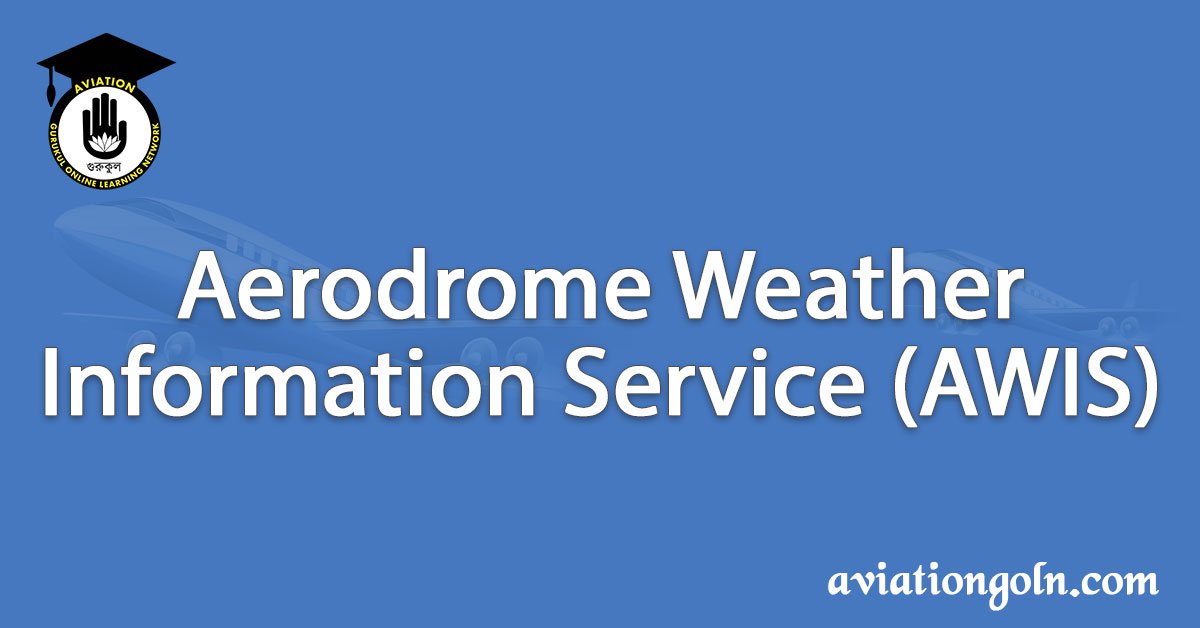Aerodrome Weather Information Service (AWIS): In aviation, safety is paramount. This is the very reason every aspect, from equipment maintenance to crew training, undergoes rigorous scrutiny. One of the most vital factors influencing aviation safety is weather. Given the profound effect of weather conditions on flight operations, accurate and timely weather information is indispensable. This is where Aerodrome Weather Information Service (AWIS) comes into play.
Aerodrome Weather Information Service (AWIS)

What is AWIS?
The Aerodrome Weather Information Service (AWIS) is a service provided at certain aerodromes (airports) to offer real-time meteorological data to pilots. This data assists in decision-making processes both before takeoff and prior to landing. AWIS systems typically provide automated voice broadcasts of local weather observations and can be accessed by pilots via specific radio frequencies.

Why is AWIS Important?
- Safety: The primary reason for the establishment of AWIS is to ensure safety. Unexpected weather changes can severely challenge a pilot’s ability to control the aircraft. By receiving timely weather updates, pilots can anticipate and respond to changes, ensuring passenger safety.
- Operational Efficiency: Flight planning requires an understanding of the prevailing weather conditions. With real-time weather data, airlines can optimize flight routes, thus saving fuel and time.
- Enhanced Decision Making: Should pilots divert to another airport? Do they need to delay their landing? These are questions that AWIS can help answer.

Components of AWIS:
An AWIS system comprises various meteorological instruments that provide a comprehensive understanding of the current weather situation. Here are some of the primary components:
- Wind Speed and Direction Sensors: Vital for pilots, especially during takeoff and landing. Crosswinds or rapidly changing wind conditions can present a challenge to even the most experienced pilots.
- Temperature and Dew Point Sensors: These measure ambient temperature and dew point. They are critical for assessing conditions for potential frost or icing.
- Barometric Pressure Sensor: It provides information on atmospheric pressure, which affects flight altitude calculations.
- Visibility Sensors: They measure how far one can see in prevailing weather conditions. Reduced visibility can be due to fog, rain, or other atmospheric particulates.
- Precipitation Sensors: These detect rain, snow, sleet, or hail, offering insights into the type and intensity of the precipitation.
- Cloud Height Sensors (Ceilometers): They determine cloud base height, which is crucial for pilots to understand when navigating below clouds.
- Thunderstorm Detectors: Lightning or thunderstorm activity can be disastrous for aircraft, making these detectors crucial.

Accessing AWIS:
Pilots can access AWIS in several ways:
- VHF Radio: Most AWIS systems provide weather updates via dedicated VHF radio frequencies. Pilots can tune in to these frequencies to receive real-time updates.
- Telephone: Some aerodromes provide telephone-based AWIS, allowing pilots to dial a specific number and listen to the latest weather broadcast.
- Internet: With the digital transformation of aviation, many AWIS systems now offer online access. Pilots can log in to dedicated portals to check the latest readings.
- Mobile Applications: There are aviation-focused mobile apps that integrate AWIS data, allowing pilots to access weather information on-the-go.

Limitations and Considerations:
While AWIS is a remarkable tool for enhancing aviation safety and efficiency, there are certain limitations:
- Coverage: AWIS provides data specific to its location at an aerodrome. Hence, it offers only a snapshot of the larger meteorological picture. Pilots still need broader meteorological services for entire route planning.
- Maintenance: Like any sophisticated system, AWIS equipment requires regular maintenance. Faulty sensors can provide inaccurate readings, potentially misleading pilots.
- Integration with Other Services: AWIS is just one of the many meteorological services available. Integrating its data with other meteorological sources can provide a comprehensive picture.

The Future of AWIS:
As technology advances, so does the potential of AWIS. Here’s what the future might hold:
- Artificial Intelligence (AI): AI algorithms can analyze vast amounts of data rapidly. Future AWIS systems might predict short-term weather changes by analyzing current data.
- IoT Integration: As the Internet of Things (IoT) becomes more prevalent, AWIS systems could integrate with other airport systems, offering a holistic view of operations.
- Global Integration: Future systems might seamlessly integrate data from various AWIS systems worldwide, offering pilots a global view of weather conditions.
- Enhanced User Experience: Augmented Reality (AR) and Virtual Reality (VR) can offer immersive ways for pilots to understand and interpret AWIS data.

The Aerodrome Weather Information Service (AWIS) plays an indispensable role in aviation safety. By providing real-time weather updates specific to aerodromes, it aids pilots in their decision-making processes, ensuring safe and efficient operations. As technology continues to evolve, so will AWIS, offering even greater insights and capabilities in the realm of aviation meteorology. With the blend of technology and meteorology, the skies remain not just the limit, but a safer frontier for exploration and travel.
